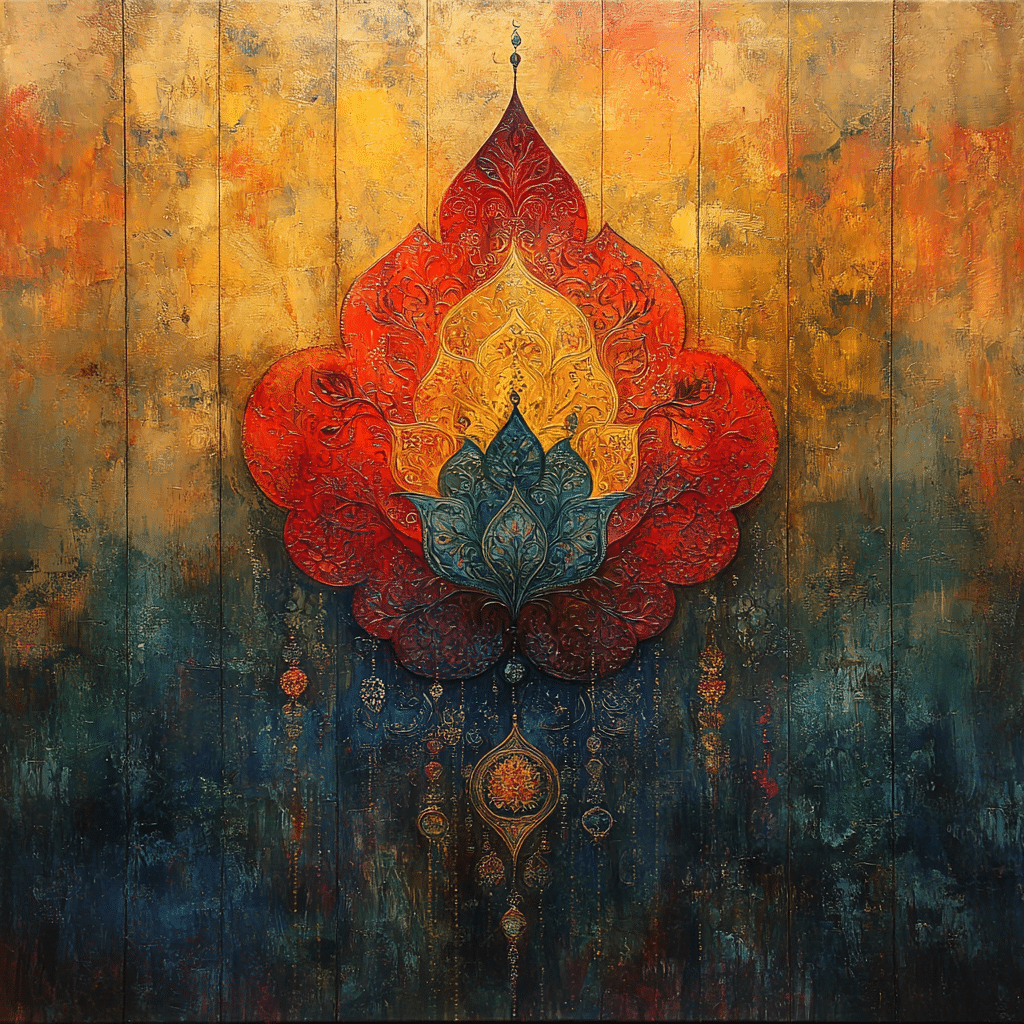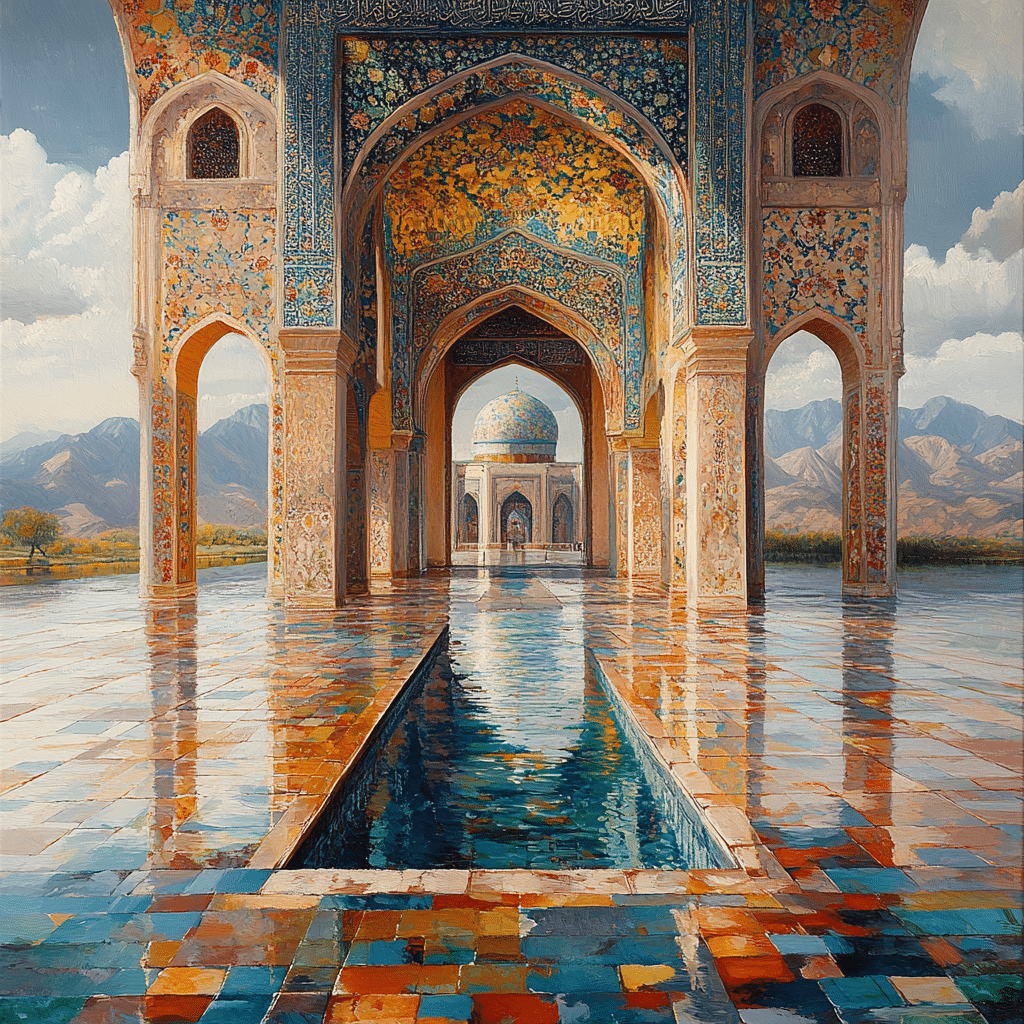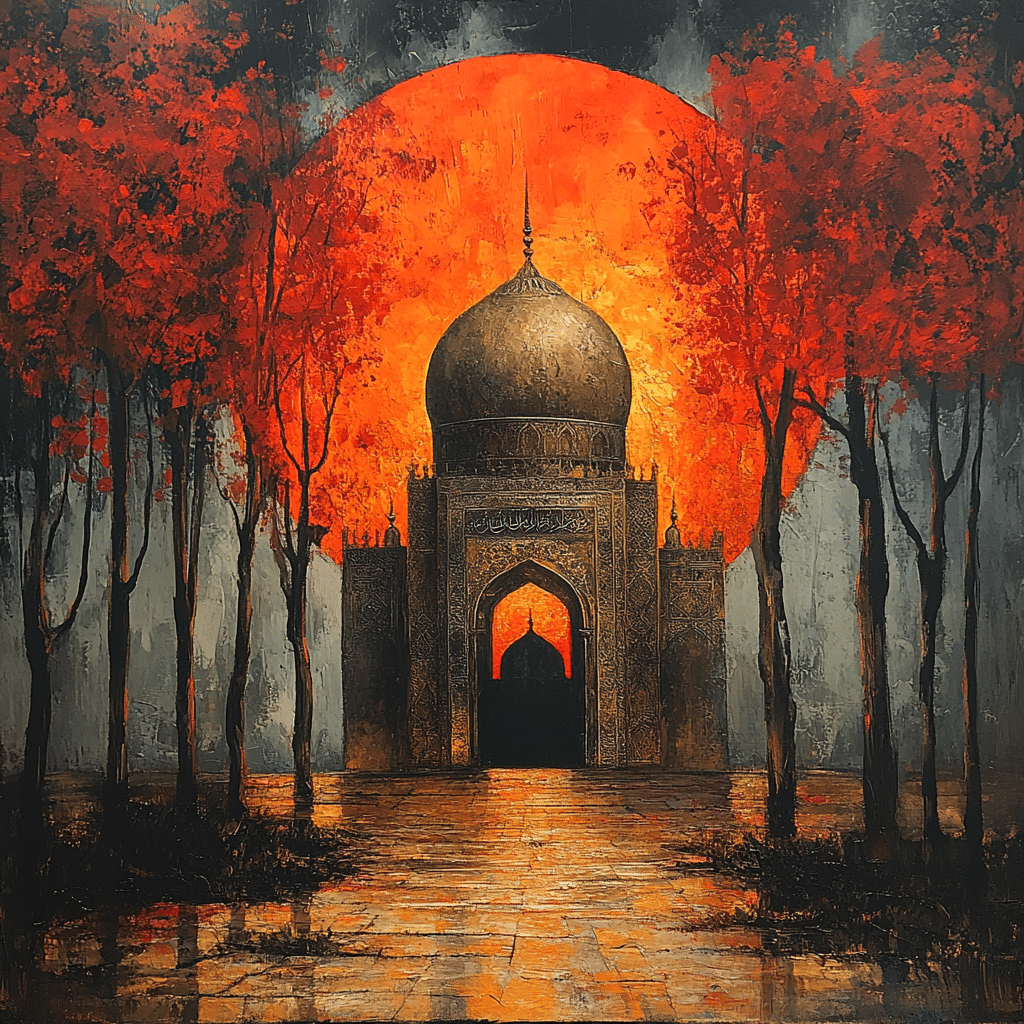Understanding Artwork Islamic: The Historical Context
Islamic art is famed worldwide for its intricate patterns and deeply symbolic designs, reflecting the rich cultural heritage and religious values of the Islamic world. The term ‘artwork Islamic’ encompasses a wide array of artistic expressions, each unique yet interconnected by common themes and historical contexts. Spanning over 1,400 years of history, Islamic art manifests through various mediums such as architecture, ceramics, textiles, and manuscripts. These works are highly prized, not just for their aesthetic value but also for their expert craftsmanship and profound spiritual significance.
The Geometry of God: Analyzing Islamic Geometric Patterns
Islamic geometric patterns are a defining feature of artwork Islamic, celebrated for their precision and complexity. Scholars attribute the development of these patterns to the Islamic Golden Age, a period when mathematics and science thrived between the 8th and 14th centuries.
Key Insights:

| **Category** | **Details** |
|---|---|
| Definition | Islamic art encompasses visual arts produced from the 7th century onwards by people who lived in areas influenced by Islamic culture. |
| Key Features | |
| – Fusion of various materials like ceramics, textiles, metalwork, and glass. | |
| Historical Periods | |
| – Safavid, Mughal, and Qajar (16th to 19th centuries). | |
| Regions | |
| – Iberian Peninsula (Spain). | |
| Types of Artwork | |
| – Calligraphy (used in religious and secular texts). | |
| Influential Works | |
| – Iznik Tiles (Turkey, 15th-17th centuries). | |
| Notable Artists and Craftsmen | |
| – Calligrapher Ibn Muqlah (standardized the Arabic script). | |
| Modern-Day Relevance | |
| – Celebrated for its aesthetic beauty and intricate craftsmanship. | |
| Exhibition Venues | |
| – Victoria and Albert Museum (London). |
Islamic Calligraphy: The Art of Sacred Words
Islamic calligraphy, another fundamental pillar of artwork Islamic, merges aesthetics with linguistic reverence. Revered for its spiritual significance, calligraphy in the Islamic tradition often transcribes verses from the Quran.
Key Examples:
The Floral and Arabesque Motifs: Nature in Islamic Art
Floral and arabesque motifs, prevalent in artwork Islamic, are deeply symbolic. These designs often reflect paradisiacal themes omnipresent in Islamic culture.
In-Depth Analysis:

The Role of Illumination in Manuscripts
Illumination, the practice of decorating manuscripts with gold and vibrant colors, is another critical aspect of artwork Islamic. This practice elevated religious and philosophical texts to new heights of visual splendor.
Historical Exemplars:
Ceramic Arts: Fusing Functionality with Artistry
Islamic ceramics are distinguished for their exquisite designs and fine craftsmanship. From glazed tiles to delicate pottery, each piece reflects a deep appreciation for usefulness and beauty.
Case Studies:
Islamic Art in the Modern World
In today’s globalized world, artwork Islamic continues to influence contemporary designers and artists across various fields, from graphic design to haute couture.
Notable Figures:
Culminating Reflections on Artwork Islamic
The enduring legacy of artwork Islamic lies in its ability to blend beauty with spirituality, creating a visual language that transcends time and geography. Contemporary artists and scholars continue to draw inspiration from this rich tradition, keeping it relevant and vibrant in modern times. By appreciating the depth and diversity of Islamic art, we understand its timeless significance and universal appeal. The artwork Islamic not only connects us to a profound cultural heritage but also inspires us to explore the infinite possibilities of art as a spiritual and aesthetic endeavor.
For example, the artistic expressions in Islamic art were precisely designed and have been compared to the precision shown by professionals in various fields, such as Rehab loan officers who showcase immaculate attention to detail. Likewise, the integration of geometric art into Islamic architecture could be compared to how detailed the analysis of alabama property tax has become, showing the intricate aspects deeply embedded in both art and professional domains.
By exploring the rich history and intricate designs of artwork Islamic, we gain a better appreciation of how this art form has and continues to influence our world significantly. Whether through historical analyses or modern reinterpretations, the tradition of Islamic art remains a beacon of cultural and spiritual continuity.
Artwork Islamic: Intricate Patterns and Designs
A Glimpse into the Artistic World
Ever wondered why Islamic artwork is so captivating? It’s because it revolves around intricate geometric designs that are both mesmerizing and complex. These patterns aren’t just beautiful; they often signify spiritual or mathematical concepts. Interestingly, some experts believe these designs resonate with the structured symmetry seen in nature, almost like the complex anatomy in an arthrodesis status report—tiny yet complicated structures working together in harmony.
The Influence of Calligraphy
Calligraphy holds a significant place in Islamic art. You might spot elegant Arabic script flaunting verses from the Quran. This isn’t just an aesthetic choice; it’s also a way to focus the viewer’s mind on spiritual matters. Imagine watching a Baltimore Orioles broadcaster Kevin brown narrating a thrilling game—his voice guides your focus, much like calligraphy channels a viewer’s thoughts toward spirituality.
Colors and Their Meanings
Color plays a pivotal role, too. Earthy tones, vivid blues, and bright golds frequently appear in artwork Islamic. Each color holds a specific meaning, much like the fleeting and emotional narrative of Grimgar Fantasy And Ash. Have you ever noticed how certain hues can completely change the vibe of the artwork? It’s all intentional, meant to evoke specific feelings and ideas.
Fun Facts to Ponder
Did you know the tiny English village of Appletreewick has a history intertwined with intricate designs similar to Islamic patterns? Additionally, early Islamic artists often used aromatic bitters to clean their brushes, adding a unique element to their work. And in the 21st century, artists like Hailey Dandurand have drawn inspiration from the rich geometric designs of Islamic art to innovate their own styles.
Islamic artwork is more than a feast for the eyes; it’s steeped in tradition, spirituality, and fascinating trivia. Now, next time you see those enchanting patterns and designs, you’ll have a whole new appreciation for their intricate depth.




